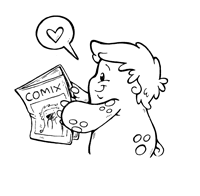
As many of you know my day job is teaching elementary school which is why there tends to be no mature stuff in this comic, we might use fancy vocabulary, but for the most part it’s kid friendly. I actually get a little upset when a creator takes a perfectly good all ages story and ruins it by putting in one word (just to be cool? just because they can? just to show everyone that they are edgy and “mature”?). I’ve already commented on publishers being clueless (Action Cat #2 came out this week- funny, the majority of the ads were all ages- hopefully they will reprint issue #1 in the same manner so I can put it in my classroom). Once a week I’m going to discuss comics in the classroom and how other teachers can use these powerful tools to engage students and enhance learning. Just remember “With Great Power comes great responsibility.”
Some of this comes from the panel I was part of at Indy PopCon with Jim McClain (Solution Squad) and other pieces come from years of using comics with kids and seeing how other teachers have embraced comics.
Vocabulary:
Comic Strip – Basically a joke or gag told in a specific number of panels
Comic Book – A book which tells a story using the medium of comics (panels, balloons, etc.)
Trade Paperback – A bound edition containing a number of comics, usually a complete story arc.
Graphic Novel – A bound edition usually containing one story. At the elementary level what most people consider Graphic Novels aren’t appropriate as the content is too mature.
In my Classroom: Even though it is reading, I tend to not allow my students to read comic strips in class. I prefer comic books and trade paperbacks since they build on each other and tell a complete story. I tell my students that while it is reading, there is more I can teach them through a comic book. If they want to check out and read books with comic strips at home, during their “free time” that’s fine, but during class time no comic strips (I also discourage joke books, and some other “fluff” books).
Some overall basic resources to start with…
- A Parent’s Guide to the Best Kids’ Comics – I have purchased three copies of this and only have one left! This is a great resource for comics sorted by age. It also includes If you liked this recommendations so what do you get that kid who loved Bone to keep them reading?
- Search the Web for good webcomics – Sadly some of the best stuff for kids is being produced independently so you need to check out the web and See what’s available. I tend to have my students reading The Dreamland Chronicles or Little Guardians (both of which are available in print also) . unfortunately not many of the comics online are in long form so they tend to be just strips. Also web creators aren’t always timely about updating their comics (like me). So kids tend to have to wait (and wait, and wait)
- Your Local Comic Book Shop- I know it’s scary in there, and not all shops are created equal, but there is no harm in asking. Some shops will donate or at least give schools a discount. The more we, as educators, talk to comic shops the bigger and better their all ages sections will be.
- Raising a Reader from the Comic Book Legal Defense Fund
- Reading With Pictures – an online community and creator of “The Graphic Textbook” which is now going by “Reading With Pictures- Comics that Make Kids Smarter” and should be available in August -as a Kickstarter supporter I better get my copies before they are for sale to the general public (just sayin’)
- Teaching with Comics and Illustrated Novels
- I’ve started to put together a resource website for the teachers at my school about comics, it is a work in progress so keep that in mind (and it has a strong focus on STEM).
I know there are a lot more and I’ll keep adding to the list as I post more, but I’d like to keep these short, Next week when we look at some specific titles that should be in your classroom comics library!

